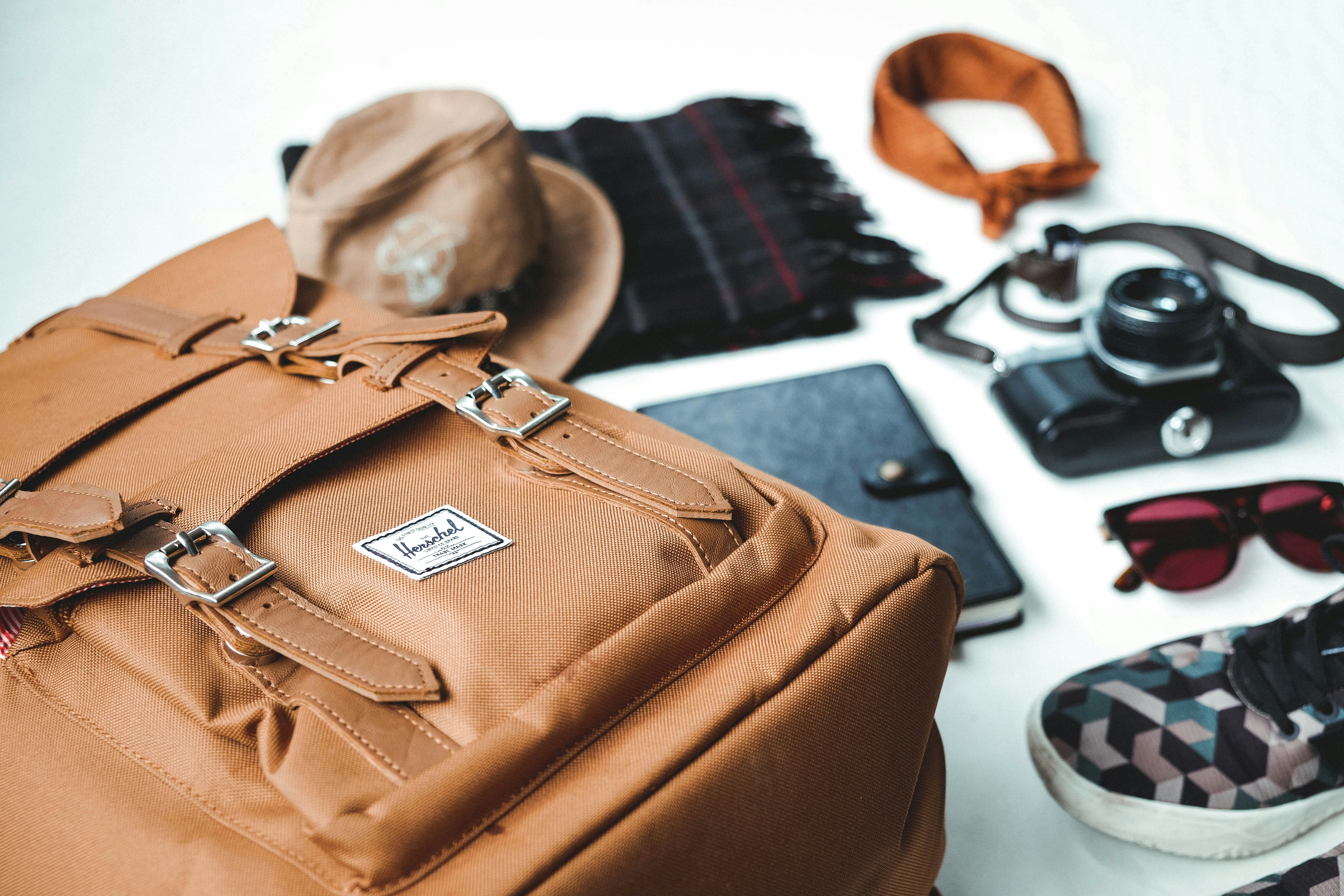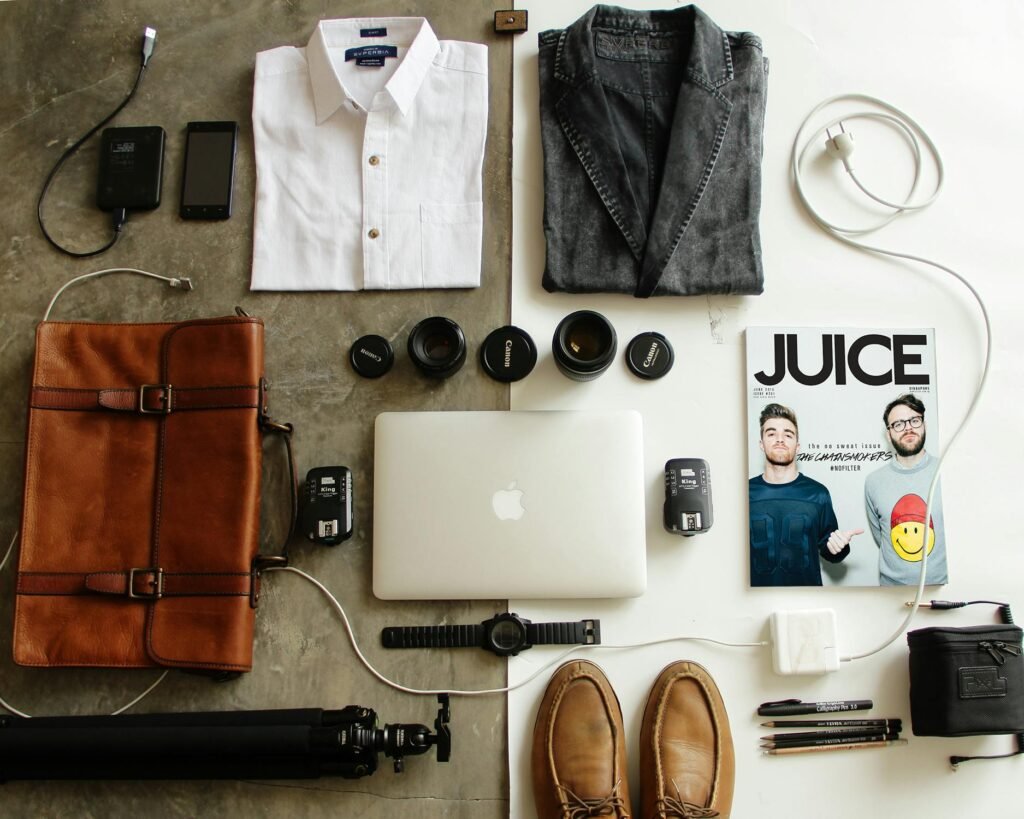Introduction to Adventure Packing
Packing for an adventure trip is a vital step that can significantly influence the overall experience. Whether you are embarking on a hiking expedition, a camping weekend, or an international exploration, effective packing is essential. In essence, an adventure trip is any journey that involves recreational activities in natural settings, often requiring a keen understanding of the elements and the gear necessary to navigate them. The term encompasses a wide range of experiences, from treks in national parks to extreme sports like rock climbing or white-water rafting.

One of the unique challenges of adventure packing is the necessity to balance versatility with the need for specific gear. Unlike conventional travel, where the focus may be on comfort or style, adventure trips often demand a practical approach. Each outing may require specialized equipment that can be bulky and heavy, while also necessitating an adept understanding of the climate and terrain to choose appropriate clothing and supplies. For instance, a mountain trek may require layers for varying temperatures, whereas a beach camping trip might need lighter garments and water-related gear.
Effective packing not only ensures that adventurers have the necessary tools at their disposal but also fosters a sense of preparedness and peace of mind. When packed appropriately, travelers can immerse themselves in the experience without concerns about missing essentials or facing unnecessary inconveniences. A thorough understanding of the items that constitute an adventure kit challenges individuals to prioritize functionality and weight, leading to a more engaging and memorable trip. Thus, in preparing for your next adventure, consider how your packing choices can set the foundation for an unforgettable journey.
Understanding Your Adventure Type
When planning an adventure trip, it is crucial to first identify the type of adventure you are embarking on, as different activities necessitate distinct gear and essentials. Understanding your adventure type not only aids in packing appropriately but also ensures a safer and more enjoyable experience. Adventure trips can range from hiking and camping in the wilderness to engaging in high-energy water sports or climbing challenging terrains. Each of these activities comes with unique requirements.

For those opting for hiking trips, one must consider the trail difficulty and environmental conditions. Essential gear includes durable hiking boots, weather-appropriate clothing, navigation tools like maps or GPS devices, hydration systems, and sufficient food supplies. If the hike extends overnight or longer, a well-insulated sleeping bag, tent, and cooking equipment should also be included to ensure comfort and safety.
Camping adventures demand further consideration of location and duration. Campers should bring a suitable tent, sleeping arrangements, portable cookware, and food storage options. Depending on the environment, items like mosquito nets or waterproof gear may also be necessary. Planning for varying weather conditions is critical; hence, layers of clothing along with rain gear are advisable.
If your adventure involves climbing, safety becomes paramount. Essential gear for climbers includes harnesses, climbing shoes, ropes, carabiners, and protective helmets. Climbers must also familiarize themselves with the terrain, weather patterns, and duration of the climb, all of which influence what gear to bring. For water sports enthusiasts, gear such as wetsuits, life vests, and specialized equipment like kayaks or surfboards are crucial for a safe experience in aquatic environments.
By assessing the type of adventure you plan to undertake, you can create a tailored packing list that enhances your experience while addressing the specific needs of your chosen activity.
The Essential Gear Checklist
When preparing for an adventure trip, having the right gear is crucial to ensure a successful and enjoyable experience. Below is a comprehensive checklist highlighting essential gear commonly required across various types of adventure trips.
Backpacks: A durable backpack is fundamental for any adventure. It should be lightweight yet sturdy, with enough capacity to hold all your essentials. When selecting a backpack, consider the trip duration and personal comfort; adjustable straps and proper padding can enhance your carrying experience.
Tents: A reliable tent provides shelter from the elements. Look for a tent that balances weight and durability, especially if you plan long hikes. Features to look for include waterproof materials and ease of setup. Depending on your adventure, you might opt for a lightweight backpacking tent or a more spacious family tent for base camping.
Sleeping Bags: Comfort during rest is vital. Your sleeping bag should be suitable for the climate you are venturing into, with temperature ratings that match expected conditions. Insulation type – down or synthetic – can affect weight and packability. Always ensure it fits well in your backpack without adding unnecessary bulk.
Camping Stoves: Food preparation is a key aspect of any adventure trip. A portable camping stove allows for efficient meal preparation. Choose a stove that aligns with the type of fuel available (propane, wood, etc.) and the size needed for your group. Consider models that offer quick setups and reliable performance.
Navigation Tools: Familiarity with the terrain is essential for safety. Invest in a reliable GPS device or a good old-fashioned map and compass. Ensure that you have a backup option in case one fails, and familiarize yourself with using these tools before heading out. The ability to navigate effectively can be the difference between a fun adventure and a challenging ordeal.
This essential gear checklist serves as a foundation for preparing your next adventure trip. Selecting the right equipment enhances your experience, making it both enjoyable and safe. Keep this list handy to ensure you have all necessary items packed before embarking on your exciting journey.
Clothing Choices for Comfort and Safety
Choosing the right clothing for adventure trips is crucial for ensuring both comfort and safety. Different activities and varying weather conditions demand thoughtful clothing considerations to optimize your outdoor experience. One fundamental principle of dressing for adventure is layering. This technique involves wearing multiple layers of clothing, allowing you to adapt to changing temperatures and exertion levels while maintaining comfort. The base layer, often made from moisture-wicking fabrics, keeps sweat away from your skin, enabling better temperature regulation. Top layers provide insulation and protection from wind and rain, showcasing the versatility of layering in outdoor activities.
In addition to the base layer, the choice of mid-layers is essential. Fabrics such as fleece or down are ideal as they offer warmth without adding excessive bulk. Furthermore, an outer layer, typically a waterproof and breathable jacket, protects against the elements. This combination ensures you stay dry and comfortable, particularly in unpredictable weather conditions commonly encountered while adventuring.
Footwear is another critical aspect of clothing choices. Appropriate footwear varies depending on the planned activities, whether it’s hiking, climbing, or walking. Sturdy hiking boots or shoes help prevent injuries and provide necessary traction on varied terrains. Choosing moisture-wicking socks can significantly enhance comfort, preventing blisters and discomfort during extensive walking or climbing sessions.
It’s equally important to pack for temperature fluctuations, ensuring you have layers that can accommodate both warmer daytime and cooler nighttime conditions. Accessible packing of these essential clothing items becomes paramount, as unexpected weather changes could occur during your trip. Staying prepared and adaptable with your clothing choices is key to achieving a successful and enjoyable adventure.
Food and Hydration Essentials
When embarking on adventure trips, maintaining adequate nutrition and hydration is critical for sustaining energy levels and enhancing overall experience. Packing calorie-dense, lightweight food items can help ensure that your body receives the necessary fuel without adding unnecessary weight to your gear. It is advisable to select foods high in carbohydrates, fats, and proteins, as these macronutrients provide the energy required for strenuous activities.

Some excellent food choices include energy bars, nuts, dried fruits, and jerky. These options are not only portable but also require minimal preparation, making them perfect for eating on-the-go. Dehydrated meals can also be an excellent option as they are lightweight and typically provide balanced nutrition while being easy to prepare with just hot water. Consider packing meals that are rich in vitamins and minerals to further support your body’s needs while on the trail.
Proper hydration cannot be overlooked during any adventure trip. It is vital to drink water consistently throughout the day to prevent dehydration, especially in warm or high-altitude environments. Carrying a portable water filtration system can be advantageous, allowing you to purify water from streams or lakes easily. These systems range from simple filters to more advanced models that eliminate bacteria and viruses, ensuring safe drinking water while reducing the weight of carrying large quantities of water.
Hydration packs are another practical solution, enabling easy access to water while on the move. These backpacks come equipped with a built-in water reservoir and a long tube for sipping, allowing for hands-free hydration. Alongside these systems, consider adding electrolyte-packed drink mixes to help replenish lost minerals due to sweating, enhancing both hydration and energy levels during your adventure. By focusing on these food and hydration essentials, you can maximize your enjoyment and performance during your exciting exploration.
First Aid and Safety Kits
Ensuring safety during adventure trips is paramount, as unforeseen circumstances can arise at any moment. A well-equipped first aid kit is essential for addressing minor injuries and medical emergencies, making it one of the critical components of your travel gear. When assembling your first aid kit, it should include several basic items. Band-aids, sterile gauze pads, adhesive tape, antiseptic wipes, and tweezers are essential for treating cuts, scrapes, and insect bites. Additionally, it’s advisable to include pain relief medications such as ibuprofen or acetaminophen, as well as antihistamines for allergic reactions.
Furthermore, consider incorporating a first aid manual or guide that outlines the necessary steps for dealing with various injuries or emergencies. This reference can be invaluable during stressful situations where quick decisions are required. Beyond basic first aid supplies, personal safety items should also be a part of your packing list. A whistle, for instance, is a lightweight tool that can signal for help if you find yourself lost or in distress.
Emergency gear is another crucial element to consider. A compact emergency blanket can provide warmth and shelter, while a multi-tool can serve a variety of purposes, from opening cans to making repairs on the go. Flashlights or headlamps, including extra batteries, will be critical for navigating through dark conditions or signaling for help. Remember, having these safety tools at your disposal is only half the solution; knowing how to use them effectively is equally important. Prior to embarking on your adventure, familiarize yourself with the items in your first aid kit and emergency gear, as this knowledge could prove lifesaving during your trip.
Tech Gear for Adventure
In the contemporary landscape of adventure travel, having the right tech gear can significantly enhance the overall experience. As adventurers navigate through remote terrains or challenging climates, essential technology such as GPS devices, headlamps, portable chargers, and cameras often become indispensable. Effective packing and protection of these items can make a substantial difference in ensuring they function as intended during your journey.
A GPS device is crucial for outdoor navigation, offering precise location tracking and route guidance. When packing a GPS unit, consider using a padded case to protect it from impacts. Additionally, ensure that the device is loaded with offline maps, which can be especially useful in areas with limited or no connectivity. Some modern units come with built-in safety features, such as emergency beacons, providing an extra layer of security.
Headlamps are another vital piece of tech gear for adventure trips. They offer hands-free illumination for setting up camp or navigating through the darkness after sunset. When packing a headlamp, remember to include extra batteries or opt for rechargeable models to avoid being left in the dark. Storing the headlamp in an easily accessible pocket can facilitate quick retrieval during nighttime activities.
A reliable portable charger is essential for keeping devices powered throughout the adventure. Select a lightweight, high-capacity charger that can quickly recharge multiple devices. To maximize efficiency, pack your charger in conjunction with charging cables, and consider placing these items in a resealable bag to protect them from moisture. Portable solar panels can also be advantageous in regions with ample sunlight, ensuring devices stay charged without the need for wall outlets.
Finally, capturing memories through photographs is a priority for many adventurers. A sturdy and lightweight camera, possibly with weather-resistant features, should be included in your packing list. It is advisable to pack this camera in a cushioned section of your bag to prevent damage during transit. By thoughtfully organizing and protecting your tech gear, you can enhance your adventure experience and ensure that your digital tools serve you well in the great outdoors.
Sustainability While Packing
Sustainability is an essential consideration when preparing for outdoor adventures. As individuals who enjoy exploring nature, it is our responsibility to ensure that our packing habits reflect a commitment to preserving the environment. By choosing environmentally friendly products and adopting responsible practices, we can minimize our ecological footprint during our trips.
When selecting gear and supplies, opt for items made from sustainable materials. Look for products that are crafted from recycled or biodegradable materials, as these choices contribute positively to the environment. Many outdoor brands are now prioritizing sustainability, offering eco-friendly tents, backpacks, and cooking equipment that are designed to last while minimizing waste. Additionally, brands that adhere to fair trade practices ensure that their products are produced ethically, which can further enhance your adventure experience.
Another crucial aspect of sustainability while packing is minimizing waste. This can be achieved by purchasing food in bulk and using reusable containers instead of single-use plastics. Carrying a reusable water bottle instead of disposable ones is another vital step, as it helps reduce plastic pollution. Furthermore, packing a compact, reusable shopping bag can be handy for collecting any waste during your journey, ensuring that you leave no trace behind.
Responsibly managing trash is also key. As outdoor enthusiasts, it is imperative to adhere to the “Leave No Trace” principles, which advocate for packing out all trash, leftover food, and gear. Make it a point to create a waste separation system in your packing strategy. Designate a specific bag for trash and another for recyclables, making it easier to dispose of waste appropriately once your adventure concludes. By prioritizing sustainability in your packing methods, you contribute to keeping natural spaces pristine and enjoyable for future generations.
Final Packing Tips and Tricks
As you prepare for your upcoming adventure trip, a well-thought-out packing strategy can make a significant difference in your overall experience. Effective packing not only involves selecting the right items but also organizing them efficiently to maximize space and ensure you have everything you need at your fingertips. To assist you in this endeavor, consider the following tips and tricks that can enhance your packing process.

Firstly, prioritize your essentials by creating a comprehensive packing list that encompasses all necessary items based on your destination, duration, and activities planned. Breaking down the list into categories—such as clothing, gear, toiletries, and food—can help streamline the packing process. Once you have your list, check off each item as you pack to ensure nothing is forgotten.
When it comes to maximizing space in your backpack, utilize packing cubes or compression bags. These tools not only organize your items neatly but also reduce bulk, allowing you to fit more gear into your bag. Additionally, rolling clothing rather than folding it can save space and minimize wrinkles. For fragile items, such as electronics or personal care products, use socks or soft clothing to provide extra cushioning within your backpack.
Organizing gear is equally important. Designate specific compartments or pouches for various categories, ensuring easy access and preventing a scramble for items when you need them most. For example, keep frequently used items, like snacks and a first aid kit, in accessible pockets on the outside of your backpack.
To conclude your packing ritual, consider doing a final walkthrough of your list and your packed items. This checklist approach allows you to double-check your essentials and gives you peace of mind as you embark on your adventure, allowing you to focus on the enjoyment of your experience rather than the stress of forgotten gear.


















